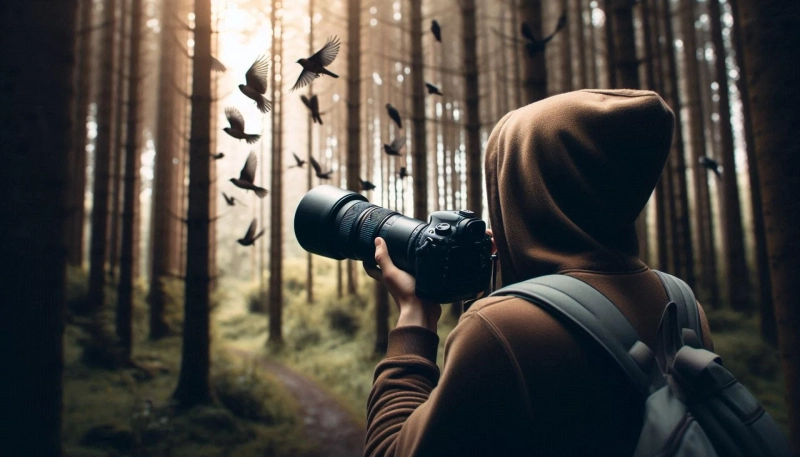Digital Single-Lens Reflex (DSLR) cameras are prized for their image quality and versatility. However, the clicking sound of the shutter can be intrusive in certain settings such as wildlife photography, weddings, or quiet environments. If you\'re looking to minimize this noise, this guide will provide practical steps to make your DSLR quieter.
Defining DSLR Noise
DSLR noise is the unwanted graininess or speckled appearance in digital photographs, often caused by low light conditions or high ISO settings. It\'s a result of random variations in pixel color or intensity.
What Causes the Noise?
The primary source of noise in a DSLR is the mirror slap and the shutter mechanism. When you press the shutter button, the mirror inside the camera flips up to allow light to hit the sensor, creating a distinctive "click." This sound is inherent to the mechanical design of DSLRs.
Impact of Camera Noise
Camera noise can disrupt your shooting environment, scare away wildlife, or attract unwanted attention. Understanding the mechanics behind the noise helps in finding effective solutions to minimize it.
Methods to Make Your DSLR Quieter
1. Use Silent Shooting Mode
Many modern DSLRs come with a silent or quiet shooting mode. This mode slows down the mirror movement and dampens the shutter sound. Check your camera\'s manual to see if this feature is available and how to activate it. Although it doesn’t completely eliminate the noise, it significantly reduces it.
2. Opt for Live View Mode
Shooting in live view mode can reduce noise since the mirror remains in the up position. When you shoot in this mode, only the shutter mechanism makes noise. While it’s not completely silent, it’s quieter than the traditional viewfinder shooting.
3. Invest in a Mirrorless Camera
If noise is a significant concern, consider switching to a mirrorless camera. These cameras lack the mirror mechanism, making them inherently quieter. They rely on an electronic shutter that is virtually silent, making them ideal for discreet photography.
4. Use a Sound Blimp
A sound blimp is a specialized housing that encases your camera, significantly muffling the sound. These are commonly used in professional settings like film sets where silence is crucial. While they can be bulky and expensive, they are highly effective.
5. Employ Noise Reduction Techniques
Using noise reduction techniques in post-processing can help if you are recording video with your DSLR. External microphones with noise-canceling features can also reduce shutter noise. Additionally, consider using a tripod to minimize vibrations that can amplify sound.
6. Upgrade to a Quieter Lens
Some lenses have noisier autofocus mechanisms. Upgrading to a lens with a quieter motor, such as a USM (Ultrasonic Motor) lens, can reduce the overall noise when focusing. This is particularly useful in situations where both the lens and shutter noise are intrusive.
Practical Tips for Quieter Shooting
1. Anticipate the Moment
Plan your shots carefully to minimize the need for multiple exposures. Anticipating the right moment can reduce the number of times you need to fire the shutter, thereby minimizing noise.
2. Distance Yourself
Whenever possible, increase the distance between you and your subject. The farther you are, the less noticeable the shutter noise will be. This is especially useful in wildlife photography.
3. Utilize Sound Barriers
Using natural or artificial barriers to block the sound can be effective. Shooting behind bushes, trees, or using portable sound barriers can help muffle the noise from your camera.
Conclusion
While completely eliminating the noise from a DSLR camera may not be possible due to its mechanical nature, these methods can significantly reduce it. Utilizing silent shooting modes, live view, or even investing in a mirrorless camera are practical steps. For professional settings, sound blimps provide an effective solution. By understanding the sources of noise and implementing these strategies, you can achieve quieter shooting and avoid disturbing your environment. Enjoy capturing those perfect moments discreetly and professionally.



